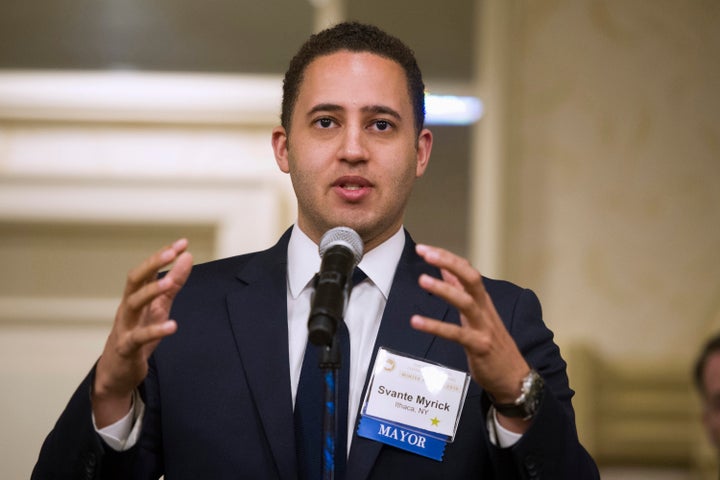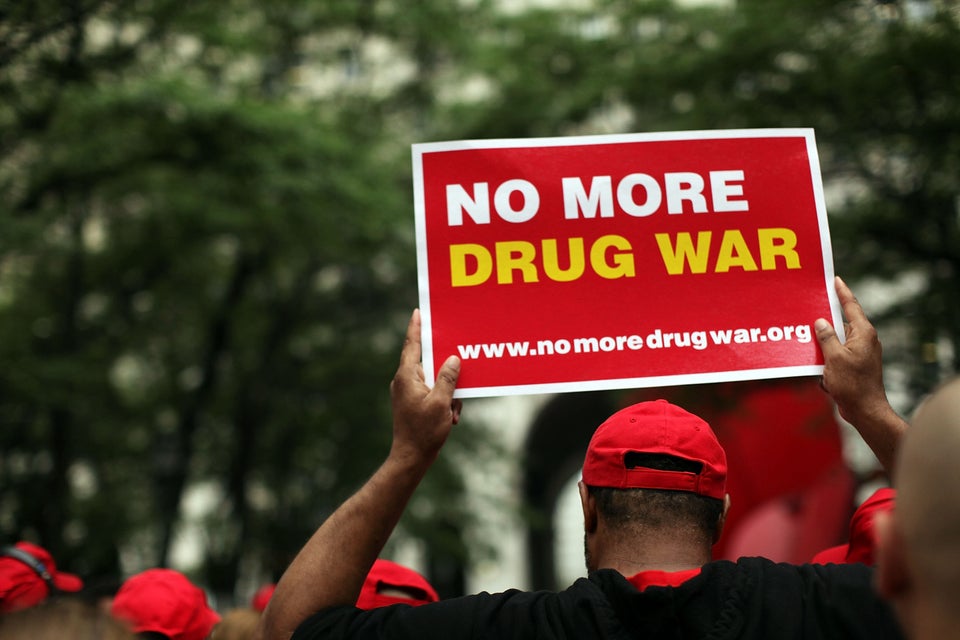
WASHINGTON -- A New York mayor is proposing to offer the first supervised injection facility in the U.S., making it possible for heroin users to inject the drug under the supervision of a nurse, as part of an ambitious and controversial plan to tackle heroin addiction.
"Using heroin is bad for you," Svante Myrick, the mayor of Ithaca, New York, told The Huffington Post on Monday. “Dying from an overdose is even worse. We have to keep people alive and get them the resources to get clean. They won't get those resources in public bathrooms and behind dumpsters in alleys."
Myrick argued that supervised injection facilities have the ability to "save lives, reduce illnesses and help people kick heroin." Canada and Europe have brought down their numbers of fatal overdoses using such facilities.
"Nothing else has worked," Myrick said. "We can't continue to try the policies that have so badly failed to keep our friends and family alive and healthy."
The Associated Press reported Monday on Myrick’s proposal, which he began crafting a year and a half ago after convening Ithaca's Municipal Drug Policy Committee. In New York, heroin overdoses jumped from 215 in 2008 to 478 in 2012, according to the Centers for Disease Control and Prevention. Heroin use among 18- to 25-year-olds went from 3.5 percent between 2002 and 2004 to 7.3 percent between 2011 and 2013. That’s a 100 percent increase.
The complete report, which Myrick will release on Wednesday, incorporates recommendations from the Ithaca Police Department, the local syringe exchange and the Greater Ithaca Activities Center, as well as more than 350 community members, officials and stakeholders.
After working in what she described as “close proximity to the ‘war on drugs’” for 25 years, Tompkins County District Attorney Gwen Wilkinson, who helped craft the Ithaca drug report, said that government needs "a new perspective on public safety.”
“Massive amounts of government resources have been expended and millions of people have been incarcerated, with outrageous racial disparities,” Wilkinson said in a statement. “Despite this, drugs are still pouring into our community.”
In addition to the supervised injection facilities, Myrick’s drug plan calls for heroin-assisted treatment, which allows careful regulation and controlled prescriptions of heroin for people who have unsuccessfully tried other treatments. The plan also proposes the creation of a 24-hour crisis center, an Office of Drug Policy to centralize the city’s efforts in this area and a youth apprenticeship program to keep kids away from drug use.
Taking a cue from Seattle, Myrick’s plan would implement a program known as Law Enforcement Assisted Diversion, giving cops the ability to direct heroin users to counseling, housing or other services instead of sending them to jail.
Myrick’s plan has the backing of harm reduction advocates. In fact, about six months ago, community organizers in New York City launched a coalition to push for safe injection sites. ("Everywhere But Safe," a documentary released last summer and co-directed by Matt Curtis and Taeko Frost, illustrates the need for such facilities in the state.)
Curtis -- who is also one of the founders of the NYC coalition and policy director for VOCAL-NY, a grassroots organization working to end the war on drugs -- called Myrick “brave” for coming forward with such a progressive plan. He said public health officials haven’t rejected such sites in New York City. "There's an openness to talking about it,” he said.
But Curtis noted that activists are still waiting on a public show of support from the mayor and the governor.
"Having [New York City Mayor Bill] de Blasio or [New York Gov. Andrew] Cuomo would be really game-changing," he said. "We're clearly not there yet."
Along with Myrick, public health officials and lawmakers from across the U.S. are looking at similar solutions to the opioid epidemic. Seattle’s mayor has expressed an interest in setting up safe injection sites. In early February, Dan Morhaim, a physician who also serves in Maryland's House of Delegates, introduced a bill with similar harm reduction measures. The bill included a version of heroin-assisted treatment.
A Boston nonprofit announced plans in November to set up a “safe space” where heroin users would be under medical supervision while they were high. “It’s not a place where people would be injecting,” the nonprofit’s chief medical officer told WBUR, a Boston radio station. “[It would be] a place where people would come if they’re high and they need a safe place to be that’s not a street corner or not a bathroom by themselves, where they’re at high risk of dying if they do overdose.”
Robert Childs, executive director of the North Carolina Harm Reduction Coalition, said safe injection sites are known to reduce the risk of HIV transmission and lead to fewer drug overdoses.
There’s also another benefit: They offer a critical opportunity for people battling addiction to be linked to social services and drug treatment. "It's a good place where you could potentially engage somebody on their mental health, but not in a threatening manner,” Childs said.
Multiple studies evaluating the first North American supervised injection facility, in Vancouver, Canada, found that such facilities were linked to a decrease in public disorder, reduced syringe sharing, a rise in safer injecting practices and increased use of addiction treatments.
Also on HuffPost:
